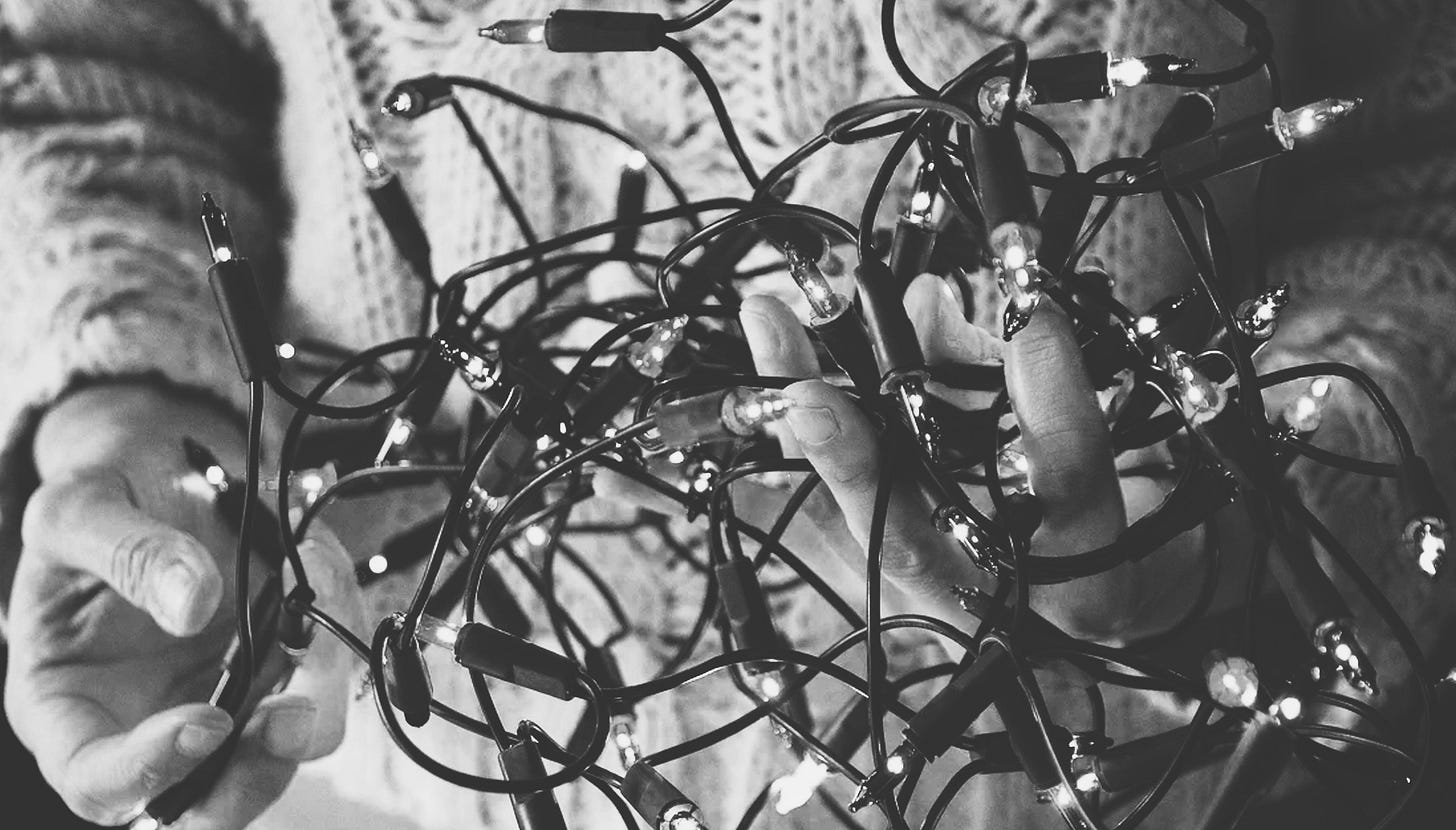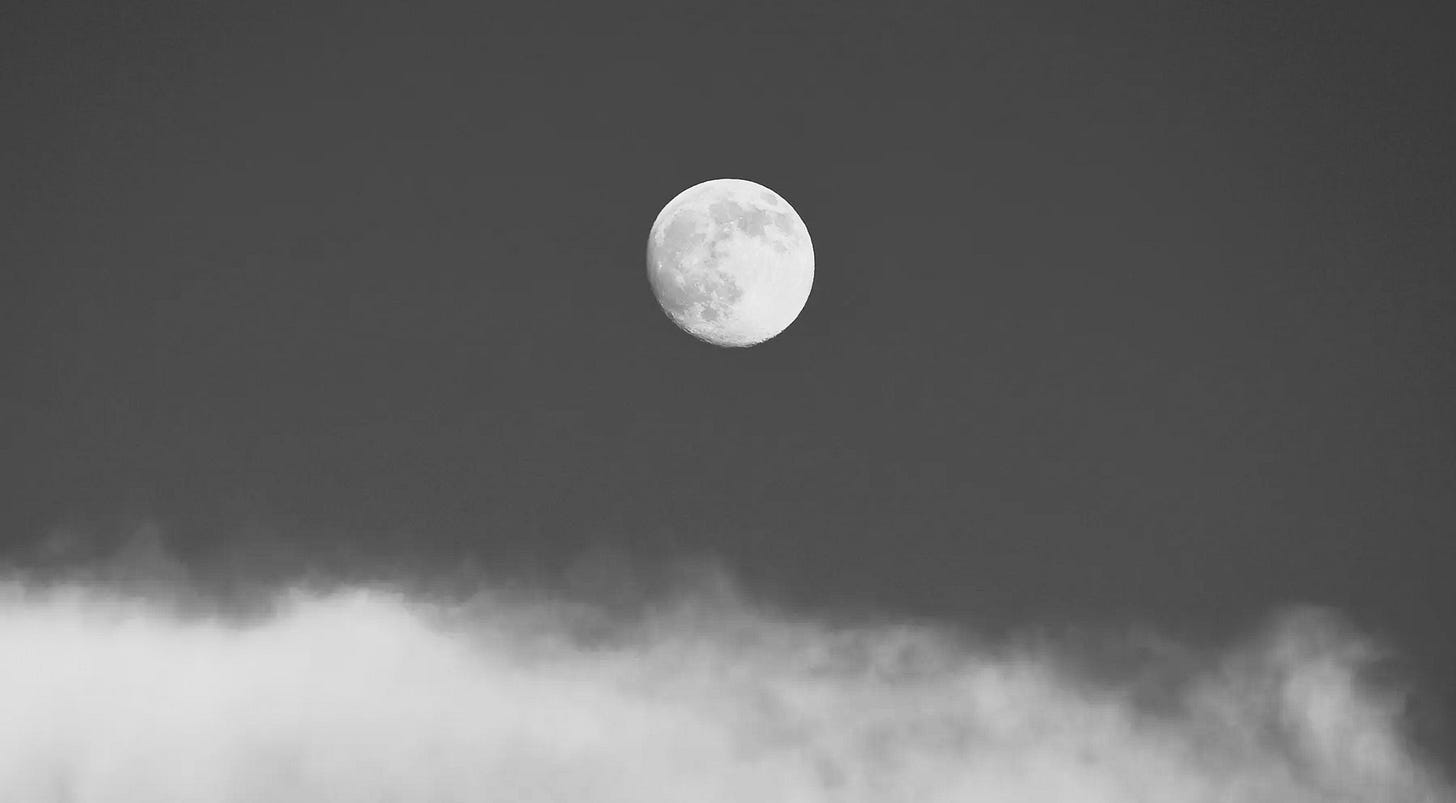Welcome to the Holy Days
Three Ways to Resist the All-Consuming Chaos of the Season
We’ve entered now into that great American season called the holidays. The weeks between Thanksgiving, Christmas, and New Year’s Day are a strange convergence of reverence, rest, consumption, and chaos. We settle into the annual rhythm of winding down, reflecting back, and looking ahead. We simultaneously rail against the rhythm of our bodies through copious consumption (I am admittedly guilty of this) and rage against the rhythm of the day by electrifying the night with ludicrous luminosity. The holidays are a sometimes-beautiful, often-baffling paradox.
The word itself, holi-day, is derived from the words “holy days,” which themselves were an adaptation of the Old English words “hālig daeg,” which mean “sacred or set apart days.” In early Christian Europe, hālig daegs marked Easter, Christmastide, as well as the feast days of various saints. These holy days reminded followers of Jesus that life was more than the present, that theirs was a story built upon the goodness of God revealed across the generations and the faithfulness of God that would ultimately prevail someday in the future. Holy days were, and are, sacred and set apart because they too remind us of the beautiful, baffling paradox that is the Christian life—we live in the present, but the present is saturated with echoes from the past and the faint whispers of the future.
Over time, the sacred and set apart began to converge with the secular and seasonal. The Christ-mass, or Christmas, originally intended to quiet the spirit into the wondrous story of the Incarnation, began merging with elements of pagan winter solstice celebrations. Because society was largely agrarian, the fallow ground of the colder months gave way to increased drunken revelry and collective mischief. After months of hard labor, winter was a time for eating, drinking, and being merry. “Merry Christmas” was a way of justifying communal debauchery. In response, devout Christians rejected cultural Christmas for many generations. When the Puritans first arrived in America, they banned Christmas altogether, deeming it a corrupt, unbiblical atrocity.
In the late 19th century, as society became increasingly industrialized and less agrarian, Christmas went through a revolutionary reimagining. Charles Dickens’ A Christmas Carol cast a new vision for the holiday, highlighting it as an opportunity to appreciate the grandeur of intimate things—unnoticed charities, the warmth of family, and finding joy in the seemingly small stuff of life. But as Marshall McLuhan famously noted, mediums are the message, and as the mediums have evolved since—from the Industrial Revolution to the Internet age, from intimacy to loneliness, from charity to cynicism, from the warmth to division, from joy to anxiety—we find ourselves back where we started, in need of another reimagining. We must learn anew to see the holidays as holy days, to lean into reverence and rest and fight the tide of consumption and chaos. A few simple paradigm shifts might help.
Fight Distraction. Focus Attention.
The fact that you have the time and technological means to give up the few minutes it’s taken you to read up to this point likely means that you live with a baseline of “enough.” It’s not that stress and struggle are absent from your life; it’s quite likely that there are uncertainties and unknowns that make you anxious. But chances are, the opportunity to consume beyond your needs is readily available to you. As such, you, like me, are susceptible to the great temptation of the American holiday ideal—to get as much as you can, whether it’s stuff, leisure, or some other iteration of pleasure.
But human attention specifically and human experience more generally are not multilateral; they’re not even bilateral. As much as we’ve been led to believe otherwise, it is not humanly possible to give our attention and experience to many things broadly while also giving them to one thing deeply. And everything about the holidays seeks our scattered attention and offers experiential excess. But holy days are counterintuitive to excess because they are about simple essence. They strip away all relevant distractions and focus our attention on the singularly transcendent.
So these holy days, what distractions might be worth subduing? What excess can be removed? What small, simple, right-there-under-your-nose gifts might deserve more of your focused attention and experiential energy?
Go Slow.
I’ve received a handful of speeding tickets over the years. And those are just the times I’ve been caught. I regularly break the speed limit by a few miles, whether on a 40 mph expressway or a 65 mph freeway. If I had a ticket for every time I went a few mph over, I’d be in significant debt. I’m not alone. By most estimates, somewhere between 60-80% of all American drivers regularly go faster than posted speed limits. It’s a normative expectation that law enforcement officials will not pull you over for going anything less than 5-10 mph faster than the law. Which leads us to ask, “Why have limits at all?”
The more important question though is, “Why the rush?” Data shows that the majority of the time, breaking the speed limit will not gain a driver more than a few minutes of time, depending on the distance. On a more macro level, our hurried lives gain us no advantage. In fact, it can be convincingly argued that a hurried life is in fact a stunted life, a way of existing without being embodied, a way of breathing without living. The mad rush of modern life renders us tourists snapping quick photos on our smartphones, only to look back at visual reminders of vague moments that fail to exist in our hearts, minds, and bodies as meaningful, formative memories.
So these holy days, when, where, and how do you feel hurried? Why the mad rush? What’s been the net gain of your frenzied life? What’s been the net loss? When, where, and how might you slow down?
Embrace the Limits of our Days.
Before Edison and others harnessed the power of electricity, once the sun went down, the lights went out and people made their daily transition from labor to rest. This has been the rhythm of human life since the very beginning when “God said, ‘Let there be light,’ and there was light. God saw that the light was good, and he separated the light from the darkness. God called the light ‘day,’ and the darkness he called ‘night.’ And there was evening, and there was morning—the first day” (Genesis 1:3-5). The separation of the day from the night has always been a hallmark of creational goodness in our world.
I’m grateful for the flow of electrons pulsing through my home and my gadgets. The world would be a decidedly lesser place without it. But we’ve lost something of what it means to be human because we can so easily deny the natural rhythm of day and night, and as a result, the natural rhythm of the human body’s need to labor and rest, to wake and sleep, to rise up and lay down. The writer Erazim Kohák reminds us that, “when electric glare takes away the all-reconciling night, the hours added to the day are a dubious gain,” also adding that, “were there no darkness to restore the soul, humans would quickly burn out their finite store of dreams.”
So these holy days, can you stop burning the midnight oil? What would it take for you to actually get enough sleep and enough rest? When, where, and how might you regularly cease from your labor, trusting that God is and always will be in control and that the world does not stop because you do?



